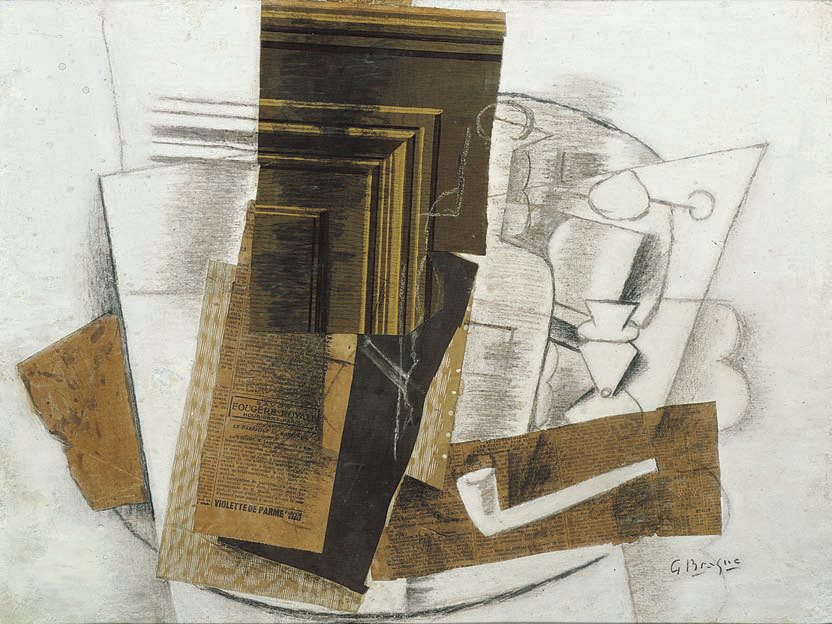Georges Braque | Bottle Newspaper, Pipe, and Glass France, 1913Pablo Picasso and Georges B
Georges Braque | Bottle Newspaper, Pipe, and Glass France, 1913Pablo Picasso and Georges Braque explored the medium of collage introduced it into the realm of “high art” (as opposed to “folk art”). From the French word coller, meaning “to stick,” a collage is a composition of bits of objects, such as newspaper or cloth, glued to a surface. Braque’s Bottle, Newspaper, Pipe, and Glass is a type of collage called papier collé (“stuck paper”) in which the artist glues assorted paper shapes to a drawing or painting.(Read More Now does not work here) In Braque’s papier collé, charcoal lines and shadows provide clues to the Cubist multiple views of various surfaces and objects. Roughly rectangular strips of printed and colored paper dominate the composition. The paper imprinted with wood grain and moldings provides an illusion whose concreteness contrasts with the lightly rendered objects on the right.The artist kept his audience aware that Bottle, Newspaper, Pipe, and Glass is an artwork, a visual game to be deciphered, and not an attempt to reproduce nature. Picasso explained the goals of Cubist collage in this way:“Not only did we try to displace reality; reality was no longer in the object… [In] the papier collé … [w]e didn’t any longer want to fool the eye; we wanted to fool the mind… . If a piece of newspaper can be a bottle, that gives us something to think about in connection with both newspapers and bottles, too.”Like all collage, the papier collé technique was modern in its medium—mass-produced materials never before found in high art—and modern in the way the artist embedded the art’s “message” in the imagery and in the nature of these everyday materials. (x) -- source link
Tumblr Blog : veryculturedswine-blog.tumblr.com
#art history#georges braque#cubism#modernism#drawing#collage#france#art piece
